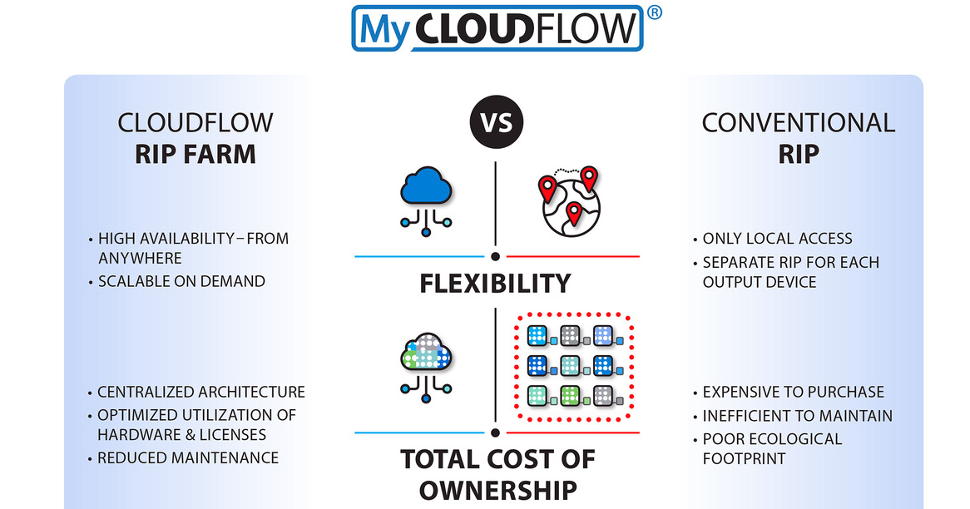HYBRID Software, a Global Graphics company, is pleased to announce the launch of a new enterprise RIP (Raster Image Processor) solution for packaging and label printers and tradeshops: the CLOUDFLOW RIP Farm.
The business model for RIPs in the packaging market has traditionally been simple: each platesetter is sold with a bundled software RIP. This works fine for packaging printers with one CTP device, but it becomes unwieldy when multiple platesetters are needed, and completely unmanageable across enterprise operations with more than one production facility. It does not provide any mechanism for load balancing across multiple CTP devices, and if production constraints force a job to be moved to another press or different location, the job must be RIPped again. Another drawback to this approach is the cost: having a separate RIP for each platesetter is expensive to purchase and inefficient to maintain.
Label and packaging production has fared relatively well during the COVID-19 pandemic, but this segment faces increasing price pressure every day. And the consolidation that continues to take place in the packaging industry means that there are more multi-location enterprises than ever before. These are the companies who can benefit most from a centralized RIP architecture like the CLOUDFLOW RIP Farm, based on the powerful Harlequin Core.
Unlike digital printing, platemaking places few demands on the RIP. The time required to RIP and screen each color of a packaging job is a small fraction of the total platemaking time. Many customers are looking for efficiency gains and technology improvements with their legacy RIPs, and computing clouds like Amazon Web Services and Microsoft Azure provide the ideal environment for enterprise customers to implement a centralized RIP architecture. This also provides a much more efficient workflow, since jobs can be RIPped and stored in the cloud, then transferred to the printing location for platemaking the day before the job is scheduled to run on press. With CLOUDFLOW’s highly efficient compression technology, the download time for each output-ready bitmap is only a small fraction of the platemaking time, and it’s easy to load balance across platesetters and printing plants if production schedules change. Customers with perpetual licenses can install the RIP Farm in the hosting environment of their choice. Subscription customers utilize the newly-developed multi-tenant MyCLOUDFLOW Gigacluster, which is hosted in AWS and managed by HYBRID Software.
“A large enterprise prepress provider needed to migrate their multitude of legacy RIPs installed at each site, and HYBRID’s CLOUDFLOW RIP Farm suits their needs perfectly, running 24/7 to RIP jobs for their worldwide production. This has delivered massive gains to the customer, as they can simplify and downscale their hardware footprint, and at the same time pool the RIP licenses centrally to drastically reduce the amount of software they need. This customer was able to reduce their footprint from more than 50 dedicated RIPs installed across the world in different locations, to a centralized CLOUDFLOW RIP Farm of 16 RIP engines running in Amazon Web Services (AWS),” explains Nick De Roeck, CTO of HYBRID Software.
Mike Rottenborn, CEO of HYBRID’s parent Global Graphics PLC, adds, “Many companies talk about plans for cloud services and subscription licensing, but HYBRID Software has been walking the talk for years. Since its introduction in 2014, CLOUDFLOW has been available in AWS and other public cloud environments, and centralized RIPping is the perfect application for the combined technology of HYBRID Software and Global Graphics.”





